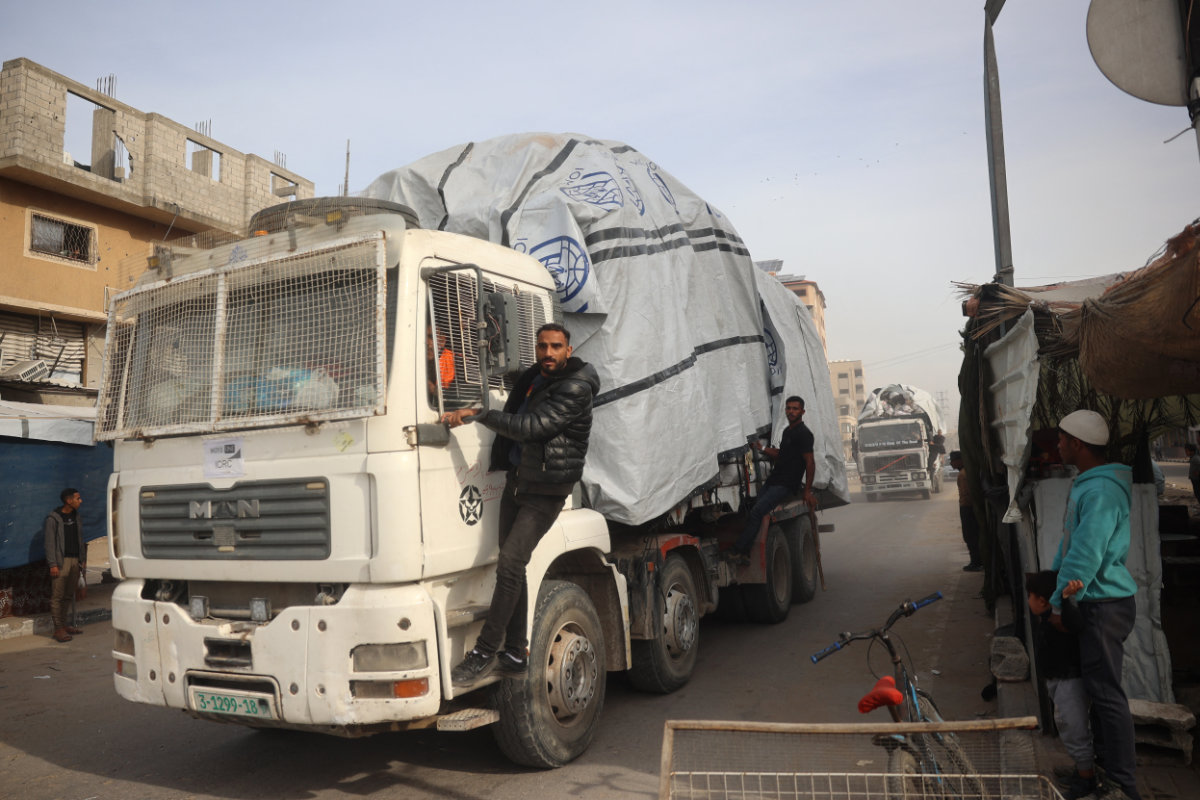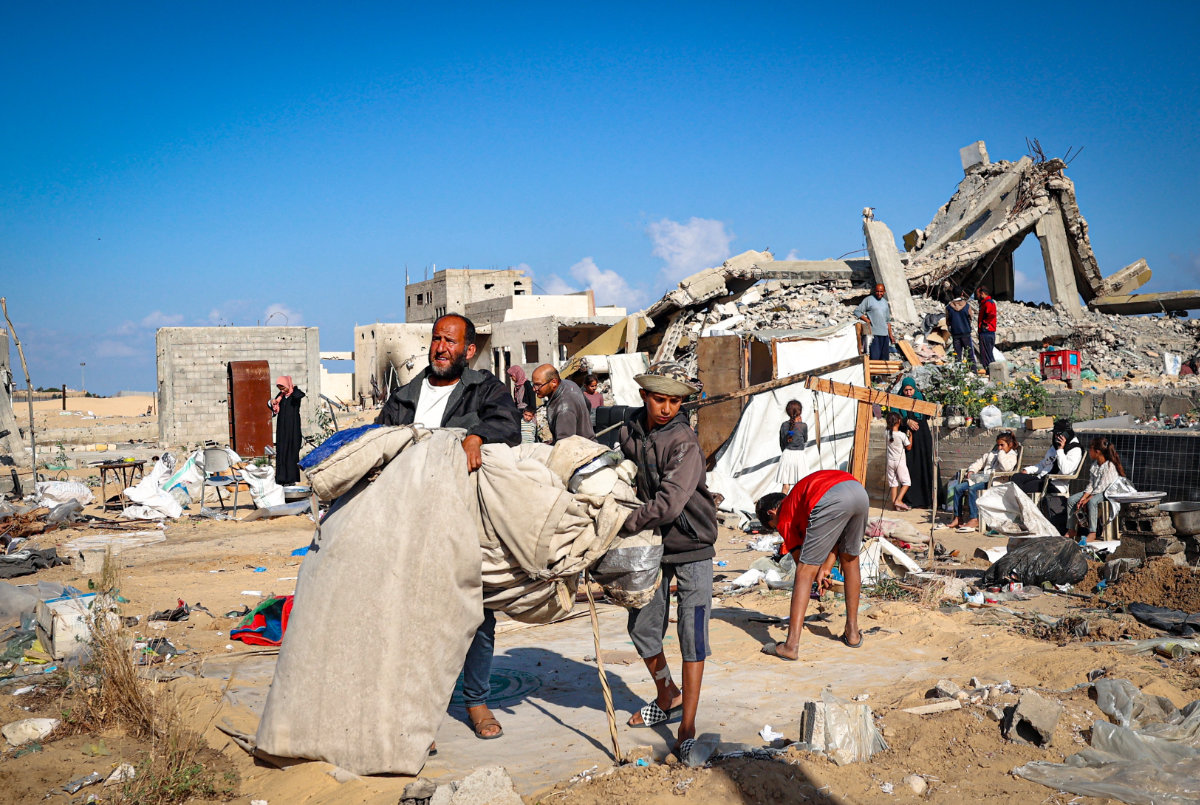ALEPPO: Militants and their Turkish-backed allies reached Syria’s second city of Aleppo Friday, as they pressed a lightning offensive against forces of the Iranian and Russian-backed government.
The fighting is some of the deadliest in years, with 255 people killed, according to the Syrian Observatory for Human Rights. Most of the dead have been combatants but the toll also includes 24 civilians, most killed in Russian air strikes.
The offensive began on Wednesday, the same day that a fragile ceasefire took effect in neighboring Lebanon between Israel and Iran-backed militant group Hezbollah.
By Friday, the militants and their allies had wrested control of more than 50 towns and villages in the north, according to the Britain-based Observatory, in the government’s biggest loss of territory in years.
They then entered western districts of Aleppo, a city of some two million people that was Syria’s pre-war manufacturing hub.
“Hayat Tahrir Al-Sham (HTS) and allied factions... were able to enter the outskirts of the Al-Hamdaniya and New Aleppo neighborhoods... after carrying out twin suicide attacks with two booby-trapped cars,” the war monitor said.
HTS, an Islamist alliance led by Al-Qaeda’s former Syria branch, shelled a student residence in the city, killing four civilians, state media reported.
Syrian and Russian warplanes launched intense air strikes on the rebel enclave around Idlib, where the militants are based, carrying out 23 raids, according to the Observatory.
Army reinforcements have arrived in Aleppo, a Syrian security official told AFP, requesting anonymity to discuss sensitive matters.
An army statement said troops had repelled the assault on the city and retaken some positions.
The United Nations Office for the Coordination of Humanitarian Affairs said “more than 14,000 people — nearly half are children — have been displaced” by the violence.
Aleppo resident Sarmad, 51, told AFP he could hear “the sounds of missiles and artillery shelling around the clock.”
“We’re scared that war will break out and we’ll be displaced from our homes again,” he said.
Nasser Hamdo, 36, who works in a pastry shop, said he had been glued to the news since hostilities began.
On Thursday, the militants and their allies cut the highway linking Aleppo to the capital Damascus, some 300 kilometers (185 miles) south, the Observatory said.
“We’re worried that roads getting blocked could cause fuel prices to soar and prevent goods from reaching the city,” Hamdo said.
Kremlin spokesman Dmitry Peskov on Friday described the situation in Aleppo as “an infringement on the sovereignty of Syria.”
He expressed support for “the government of Syria to quickly restore order in this district.”
Iranian Foreign Minister Abbas Araghchi pledged “continued support for the government, nation and army of Syria,” in a phone call with his Syrian counterpart Bassam Al-Sabbagh, according to a statement.
The Idlib area has been subject to a Turkish- and Russian-brokered truce since 2020. The ceasefire has been repeatedly violated but had largely held.
An AFP correspondent in the rebel enclave saw militants advancing in tanks as intense exchanges of fire took place in an area just seven kilometers (a little over four miles) from Aleppo.
AFP images showed abandoned army tanks and other military vehicles.
The correspondent said the militants and their Turkiye-backed allies took orders from a joint operations command.
Analyst Nick Heras, of the New Lines Institute for Strategy and Policy, said the fighters were “trying to preempt the possibility of a Syrian military campaign in the region of Aleppo.”
According to Heras, the Syrian government and its key backer Russia had been preparing for such a campaign.
Russia intervened in Syria in 2015, turning the tide of the civil war which broke out four years earlier in favor of the government, whose forces at the time had lost control of most of country.
Other interests are also at stake.
As well as Russia, Syrian President Bashar Assad has been propped up by Iran and allied militant groups, including Lebanon’s Hezbollah.
Iran-backed militias have a heavy presence in the Aleppo region after providing crucial ground support to the army in its recapture of rebel-held areas of the city in 2016.
Heras said anti-government forces are “in a better position to take and seize villages than Russian-backed Syrian government forces, while the Iranians are focused on Lebanon.”
Observatory director Rami Abdel Rahman said government forces “were totally unprepared” for the attack.
“It is strange to see regime forces being dealt such big blows despite Russian air cover and early signs that HTS was going to launch this operation,” Abdel Rahman said.
“Were they depending on Hezbollah, which is now busy in Lebanon?”
Militants, allies enter Syria’s second city Aleppo in lightning assault
https://arab.news/cpx84
Militants, allies enter Syria’s second city Aleppo in lightning assault

- The violence has killed 242 people, according to a Syrian war monitor
- The fighters had on Thursday cut the highway linking Aleppo to Syria’s capital Damascus
































